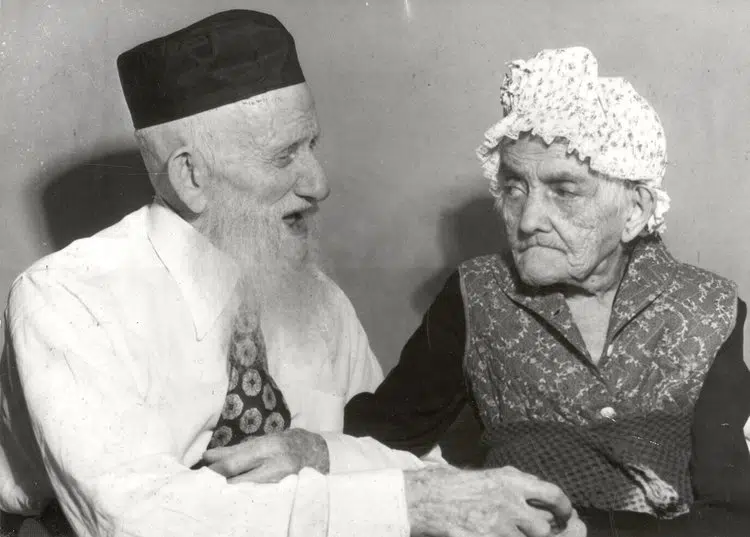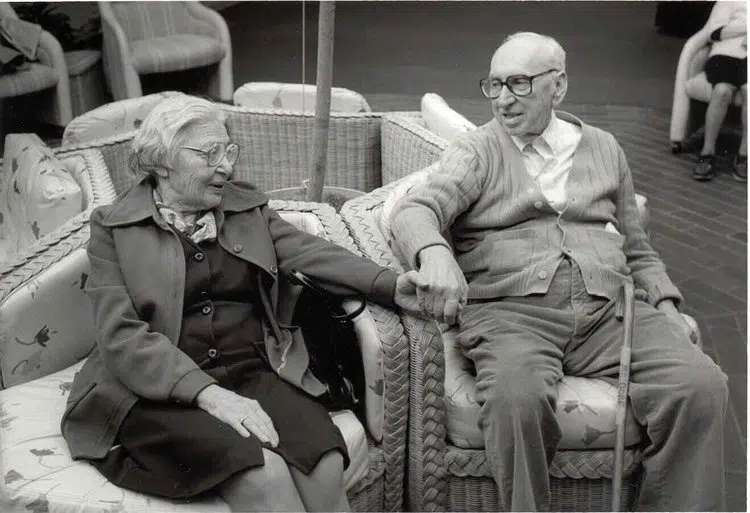In 1905, the population of Detroit was 320,000, which included 6,000 Jews, many of them recent immigrants from Europe. Every synagogue had its own “Chevra,” a society devoted to clothing and feeding the poor, providing for orphans and widows, and seeing that every Jew was accorded a proper ritual burial.
Beth Jacob Synagogue on Hastings Street was no exception. The congregation established a Chevra Kadisha (Burial Society). It was established in 1905 and called Anshe Chesed Shel Emeth (“Men of Sincere Kindness”). The society’s members knew that an elderly homeless man had taken to sleeping in the synagogue. Focusing their attention on the Jewish community’s lack of facilities for older people, the society began to provide lodging and meals for older adults in need. On June 10, 1907, the members of Anshe Chesed Shel Emeth, under the leadership of Jacob Levin, a devout orthodox Jew, incorporated the “Jewish Old Folks Home.”

With Levin’s dedication, the group raised $10,000 to purchase a large house at Brush and Winder, close to where the Eastern Market stands today. “The Home” became popular among elderly orthodox Jews, and it was soon filled to capacity, with a long waiting list. Shortly after, an adjacent home was purchased and the two homes were connected. The larger facility accommodated 53 persons, but a waiting list remained. Plans were made for a new larger home, when the Depression struck and the plans were shelved.
In 1931, the “Jewish Old Folks Home” became affiliated with the Jewish Welfare Federation, which had been organized in 1923. Federation leaders agreed that a new facility was desperately needed, and in 1935 and 1936, funds from the Allied Jewish Campaign were earmarked to build not only a new facility, but a new agency.

This rich history of our community caring for its Jewish older adults continued through the decades with the building of the Jewish Home for the Aged on Petoskey on Detroit’s west side. Later, when the Jewish population of Detroit began its migration toward the northwest, Borman Hall was built and added to the complement of residences, followed 5 years later by Prentis Manor in Southfield.
The Jewish Federation recognized the need for affordable housing options for independent Jewish older adults, and in 1967 it created a new agency, the Jewish Federation Apartments, Inc., which became known as Jewish Apartments and Services (JAS). Working with the U.S. Department of Housing and Urban Development (HUD) and with the generosity of the Prentis and later the Teitel families, JAS built the Anna and Meyer Prentis Apartments, opening in December of 1971. The building was fully rented at the time of its opening with an extensive waiting list and a second building was soon constructed, creating the Anna and Meyer Prentis Federation Apartments.
With ever increasing needs among the Jewish population of metropolitan Detroit, and its continued northwest migration, September of 1982 brought the groundbreaking of Jewish Home for Aged Edward I. and Freda Fleischman Residence and the Louis C. and Edith B. Blumberg Plaza in West Bloomfield, on the Marcia and Eugene Applebaum Jewish Community Campus.
Just as the Jewish Home for Aged continued its growth, so did Jewish Apartments and Services. The Lillian and Samuel Hechtman Federation Apartments were completed in 1982 in West Bloomfield. But the needs continued to grow, and Jewish Apartments and Services added to its residential communities once again in 1988 with the Harriett and Ben Teitel Apartments in Oak Park on the A. Alfred Taubman Jewish Community Campus, followed by the opening in 1991 of Phase II of the Hechtman Apartments and the construction of the Norma Jean and Edward Meer Apartments, both in West Bloomfield, opening in 2001.

Jewish Home for Aged closed both Borman Hall and Prentis Manor between 1993 and 1996 and turned its attention to expanding programming and services on its West Bloomfield campus. In 1997, Jewish Home for Aged was renamed Jewish Home and Aging Services to reflect the new agency’s growing mission, including community outreach support services for older adults, a chaplaincy program and, a few years later, the creation of the Dorothy and Peter Brown Jewish Community Adult Day Program.
In 2009, Jewish Home and Aging Services merged with Jewish Apartments and Services to form Jewish Senior Life (JSL). This new agency has become the community’s central resource for older adults. Today, Jewish Senior Life has older adult communities on two beautiful campuses, one in West Bloomfield on the Marcia and Eugene Applebaum Campus of the Jewish Community Center, and one in Oak Park on the A. Alfred Taubman Jewish Community Center Campus. Jewish Senior Life offers Independent Living, Assisted Living and Memory Care communities with outstanding programs and services delivered with the highest level of care, respect and dignity to persons of all faiths and beliefs. We embrace diverse residential communities.
Jewish Senior Life provides equal housing opportunities to all persons regardless of race, color, religion, sex, disablility (handicap), familial status, without regard to actual or perceived sexual orientation, gender identity, age, marital status, national origin, or source of income. Read our Non-Discrimination Policy.